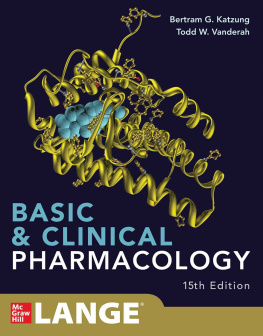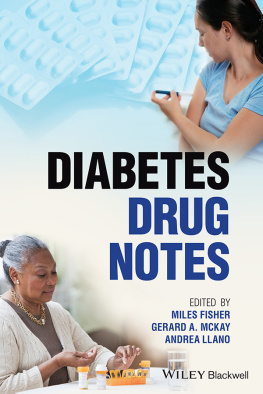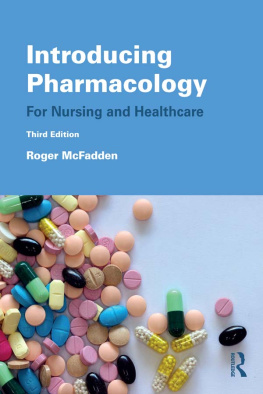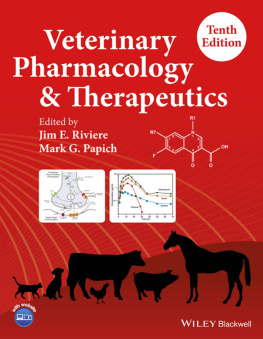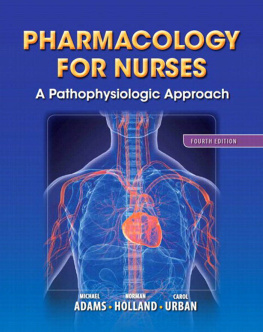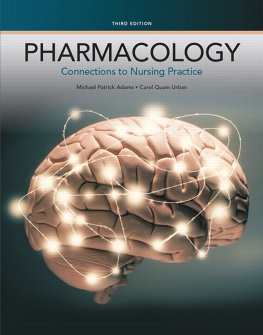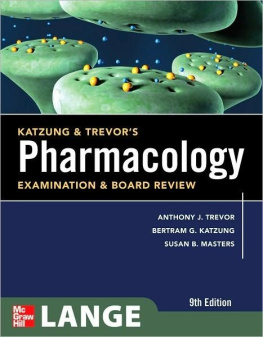NOTICE
Medicine is an ever-changing science. As new research and clinical experience broaden our knowledge, changes in treatment and drug therapy are required. The authors and the publisher of this work have checked with sources believed to be reliable in their efforts to provide information that is complete and generally in accord with the standards accepted at the time of publication. However, in view of the possibility of human error or changes in medical sciences, neither the authors nor the publisher nor any other party who has been involved in the preparation or publication of this work warrants that the information contained herein is in every respect accurate or complete, and they disclaim all responsibility for any errors or omissions or for the results obtained from use of the information contained in this work. Readers are encouraged to confirm the information contained herein with other sources. For example and in particular, readers are advised to check the product information sheet included in the package of each drug they plan to administer to be certain that the information contained in this work is accurate and that changes have not been made in the recommended dose or in the contraindications for administration. This recommendation is of particular importance in connection with new or infrequently used drugs.

Copyright 2014 by McGraw-Hill Education. All rights reserved. Except as permitted under the United States Copyright Act of 1976, no part of this publication may be reproduced or distributed in any form or by any means, or stored in a data base or retrieval system, without the prior written permission of the publisher.
ISBN: 978-0-07-181054-8
MHID: 0-07-181054-4
The material in this eBook also appears in the print version of this title: ISBN: 978-0-07-176917-4, MHID: 0-07-176917-X.
eBook conversion by codeMantra
Version 1.0
All trademarks are trademarks of their respective owners. Rather than put a trademark symbol after every occurrence of a trademarked name, we use names in an editorial fashion only, and to the benefit of the trademark owner, with no intention of infringement of the trademark. Where such designations appear in this book, they have been printed with initial caps.
McGraw-Hill Education eBooks are available at special quantity discounts to use as premiums and sales promotions, or for use in corporate training programs. To contact a representative please visit the Contact Us page at www.mhprofessional.com.
TERMS OF USE
This is a copyrighted work and McGraw-Hill Education and its licensors reserve all rights in and to the work. Use of this work is subject to these terms. Except as permitted under the Copyright Act of 1976 and the right to store and retrieve one copy of the work, you may not decompile, disassemble, reverse engineer, reproduce, modify, create derivative works based upon, transmit, distribute, disseminate, sell, publish or sublicense the work or any part of it without McGraw-Hill Educations prior consent. You may use the work for your own noncommercial and personal use; any other use of the work is strictly prohibited. Your right to use the work may be terminated if you fail to comply with these terms.
THE WORK IS PROVIDED AS IS. McGRAW-HILL EDUCATION AND ITS LICENSORS MAKE NO GUARANTEES OR WARRANTIES AS TO THE ACCURACY, ADEQUACY OR COMPLETENESS OF OR RESULTS TO BE OBTAINED FROM USING THE WORK, INCLUDING ANY INFORMATION THAT CAN BE ACCESSED THROUGH THE WORK VIA HYPERLINK OR OTHERWISE, AND EXPRESSLY DISCLAIM ANY WARRANTY, EXPRESS OR IMPLIED, INCLUDING BUT NOT LIMITED TO IMPLIED WARRANTIES OF MERCHANTABILITY OR FITNESS FOR A PARTICULAR PURPOSE. McGraw-Hill Education and its licensors do not warrant or guarantee that the functions contained in the work will meet your requirements or that its operation will be uninterrupted or error free. Neither McGraw-Hill Education nor its licensors shall be liable to you or anyone else for any inaccuracy, error or omission, regardless of cause, in the work or for any damages resulting therefrom. McGraw-Hill Education has no responsibility for the content of any information accessed through the work. Under no circumstances shall McGraw-Hill Education and/or its licensors be liable for any indirect, incidental, special, punitive, consequential or similar damages that result from the use of or inability to use the work, even if any of them has been advised of the possibility of such damages. This limitation of liability shall apply to any claim or cause whatsoever whether such claim or cause arises in contract, tort or otherwise.
Contents
Section I
General Principles
Section II
Neuropharmacology
Section III
Modulation of Cardiovascular Function
Section IV
Inflammation, Immunomodulation, and Hematopoiesis
Section V
Hormones and Hormone Antagonists
Section VI
Drugs Affecting Gastrointestinal Function
Section VII
Chemotherapy of Microbial Diseases
Section VIII
Chemotherapy of Neoplastic Diseases
Section IX
Special Systems Pharmacology
Preface to the Second Edition
This Manual derives from the 12th edition of Goodman & Gilmans The Pharmacological Basis of Therapeutics . The parent text covers not just principles and mechanisms of action but also details of clinical use and recent basic research that supports therapeutic applications and points the way toward new therapies; as a consequence of this thoroughness, the book is large and not in the fashion of the shorter texts preferred by students of this era. To make core material from G&G more accessible, we have abridged the 12th edition of the parent text, trying to present the essentials of mechanism and clinical use while omitting research data, references, and the pharmacokinetic data of Appendix II, all of which can be found at the G&G website on AccessMedicine.com and AccessPharmacy.com, along with regular therapeutic updates and mechanistic animations. We have also generally omitted the structures of therapeutics agents, which are readily available on the books website and on PubChem (pubchem.ncbi.nlm.nih.gov/). This Manual of Pharmacology and Therapeutics is organized identically to the parent text, using many of the same figures and tables; a number of figures have been improved or added anew for this edition.
Some realizations gained from editing the 12th edition and this volume stand out:
The invention of new classes of drugs has slowed to a trickle.
Therapeutics has barely begun to capitalize on the information from the Human Genome Project.
The development of resistance to antimicrobial agents, mainly through their overuse and misuse in agriculture and medicine, threatens to return us to the pre-antibiotic era.
We have the ingenuity to correct these shortcomings if we can muster the will and the research support to do so.
We thank the contributors and editors of the 12th edition of G&G, Saloni Narang of Thomson Digital, Christie Naglieri and James Shanahan of McGraw-Hill, and a long line of contributors and editors who have worked on Goodman & Gilman over 12 editions. It is a tribute to Louis Goodman and Alfred Gilman that their book is alive and vigorous 72 years after the publication of the first edition.
Randa Hilal-Dandan
Laurence Brunton
San Diego, California
Next page

